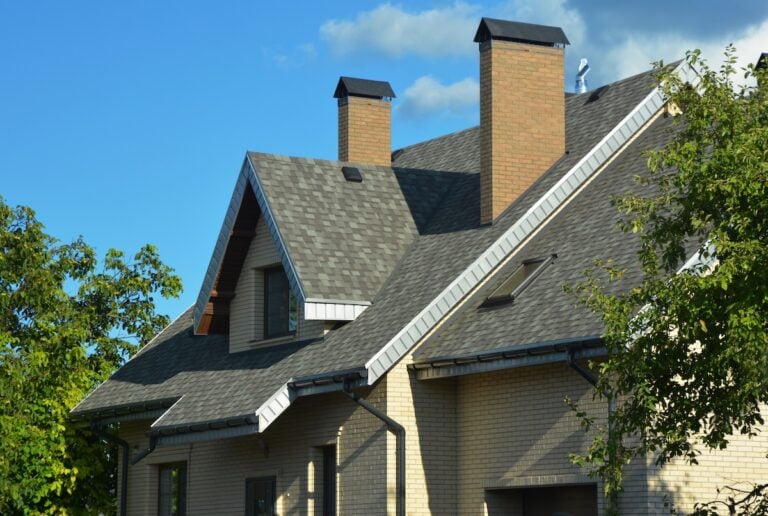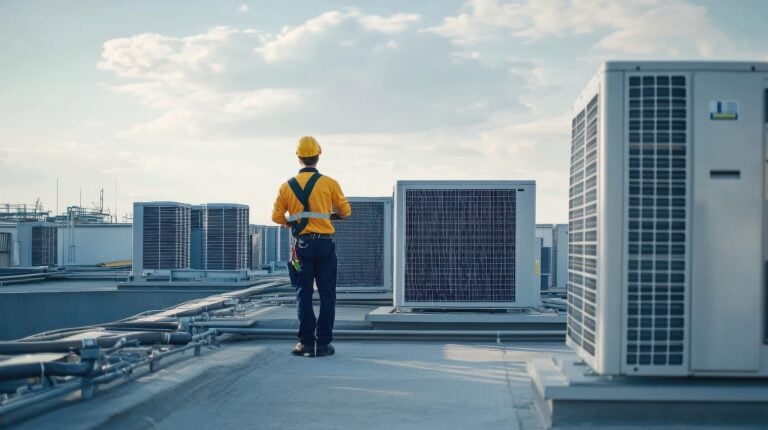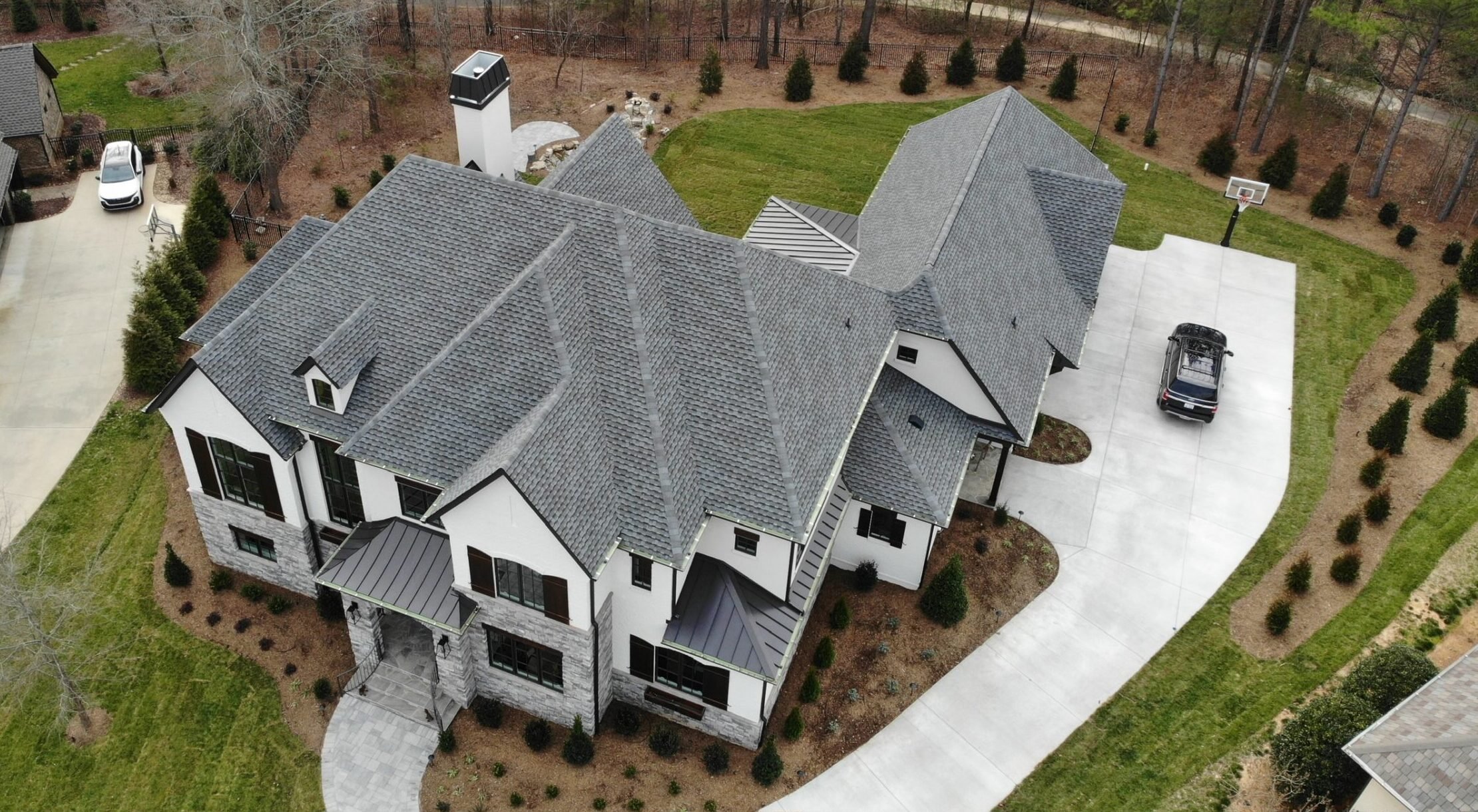What Does Hail Damage Look Like on a Roof? (Picture Guide)
Posted 6.24.25 | 8 Minute Read
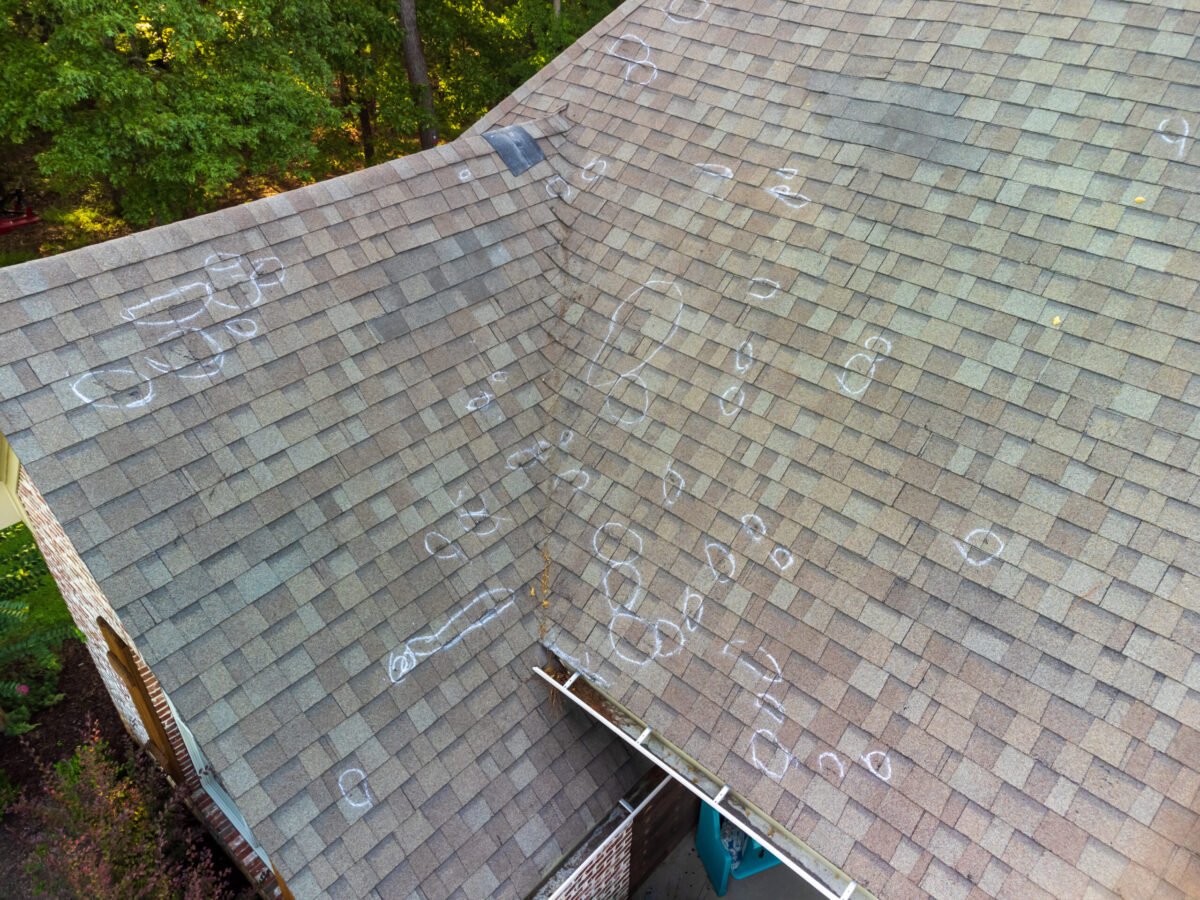
After a hailstorm passes through your neighborhood, you might wonder if your roof sustained damage. Hail damage on a roof can range from subtle to severe, and knowing what to look for can help you identify problems before they lead to costly repairs or water damage inside your home. This comprehensive guide will show you exactly what does hail damage looks like on a roof and provide you with the knowledge to assess your roof’s condition.
In this article, we’ll cover:
- Common signs of hail damage on shingles
- Steps to properly inspect your roof for hail damage
- When to call a professional roofing contractor
🔎 Understanding Hail Damage on Asphalt Shingles

Asphalt shingles are the most common roofing material in North America, and they show hail damage in several distinct ways. The severity of damage depends on the size of the hailstones, wind speed during the storm, and the age and condition of your shingles.
- Granule Loss: Hail can knock off the protective granules on asphalt shingles, leaving dark spots or circles where the black asphalt backing is exposed. You may also notice excess granules in your gutters or around your home’s foundation after a hailstorm.
- Bruising or Soft Spots: Hail impact can create soft spots or bruises on shingles that may not be visible but can be felt by pressing on the surface. These areas weaken the shingle, increasing the risk of future damage.
- Cracked or Split Shingles: Larger hailstones or repeated impacts can cause shingles to crack or split, exposing the roof deck to moisture and potential water damage.
✅ 5 Steps to Spot Hail Damage on Your Roof
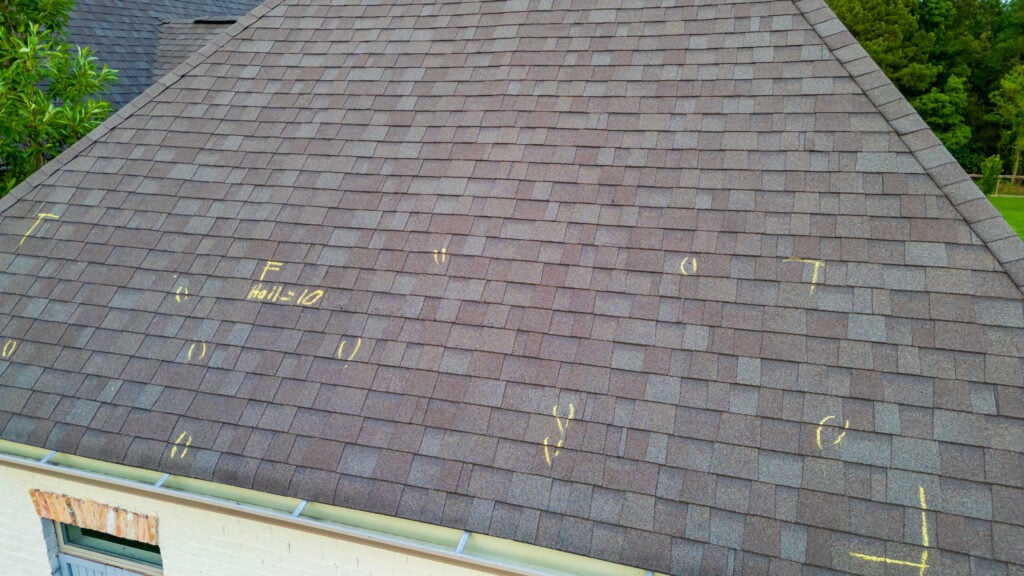
Conducting a thorough inspection of your roof after a hailstorm is crucial for identifying damage early. Here’s how to safely and effectively assess your roof:
1. Start with a Ground-Level Visual Inspection
Before climbing onto your roof, begin your inspection from the safety of the ground. Use binoculars or a zoom camera to get a closer look without putting yourself in harm’s way. Carefully scan your roof for visible signs of damage, such as missing or loose shingles, cracks, or anything that appears out of place. Pay close attention to areas like dormers, peaks, and valleys, where damage tends to accumulate. Also, look for signs of wear or tear caused by wind, hail, or debris. Performing this initial step can help you identify problem areas without risking injury.
2. Inspect Your Gutters and Downspouts
Your gutters and downspouts can reveal a lot about the condition of your roof. Check your gutters for an excessive amount of shingle granules, which could indicate serious wear or damage to your shingles. Granules look like small, coarse sand particles and are a key protective layer for your roof. If you notice dents or cracks in metal gutters and downspouts, it’s a sign that hail has hit your property hard, and your roof could have sustained similar damage. Pay attention to whether water flows properly through the gutters, as blockages or structural issues could also point to larger roofing concerns.
3. Check for Indirect Signs of Damage
Hailstorms and severe weather often leave evidence beyond just your roof. Walk around your property and look for other signs of damage that may indicate your roof has been affected. For example, check for cracks, dents, or chips in your siding or exterior paint. Inspect outdoor furniture, vehicles, and any metal structures for dents or scratches, which can give you a sense of the storm’s intensity. Don’t forget to examine your landscaping—damaged plants, uprooted trees, or shredded leaves can all be clues that the storm was strong enough to impact your roof. Broken windows or cracked glass may also indicate debris was thrown around with enough force to potentially harm your roof.
4. Examine Roof Accessories
Roof accessories are often overlooked but can provide valuable insight into the overall condition of your roof. Carefully inspect vent covers and exhaust fans for cracks, dents, or warping caused by hail or strong winds. Check satellite dishes or antennas for physical damage or alignment issues that might have occurred during the storm. Chimney caps and flashing, which are critical for preventing leaks, should also be inspected for bends, rust, or gaps. If you have skylights, take the time to examine both the glass and the seals around the edges for cracks or water damage. These areas are particularly vulnerable and can lead to leaks or further structural issues if not addressed promptly.
5. Document Everything You Find
As you conduct your inspection, be sure to thoroughly document any signs of damage. Use a camera or smartphone to take clear, high-resolution photos of the affected areas. Capture close-up shots of specific damage, such as cracked shingles or dented gutters, and wider-angle shots that show the damage in relation to the rest of your roof or property. Videos can also be helpful for showing the extent of the damage in more detail. This documentation will be crucial if you need to file an insurance claim or consult with a roofing professional for repairs. Keeping a detailed record ensures you have all the evidence you need to support your case and get the assistance you require.
👨🔧 When Hail Damage Requires Professional Attention
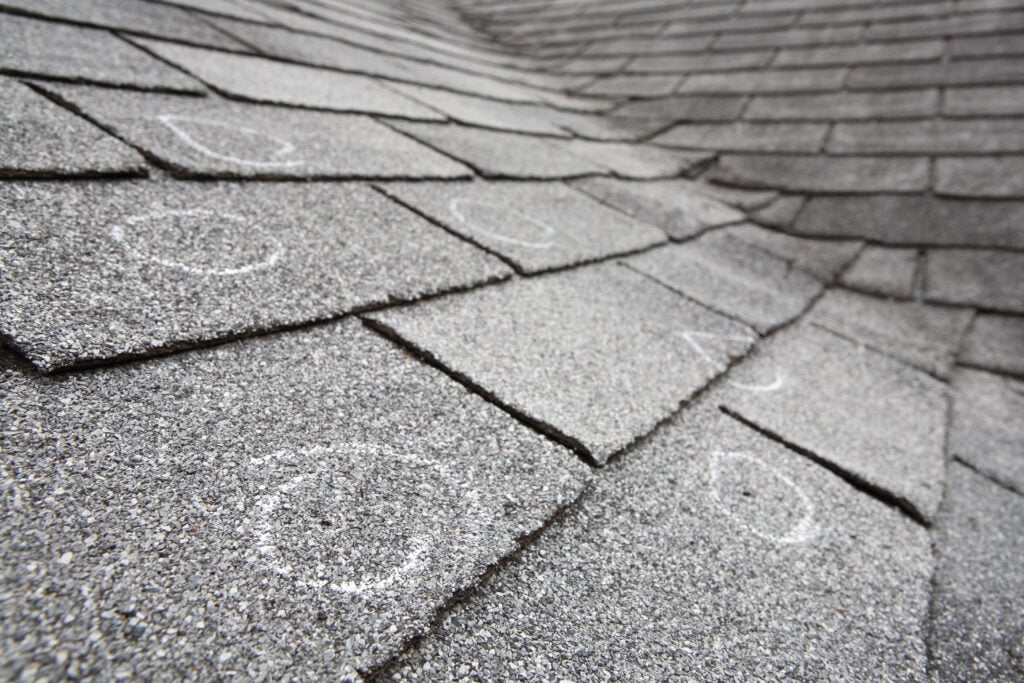
While some hail damage might seem minor, it’s important to understand when professional intervention is necessary. Even small amounts of granule loss can reduce your roof’s effectiveness and lead to larger problems over time.
Signs You Need Professional Help
Your roof is one of the most critical components of your home, and even minor damage can lead to bigger issues if left unaddressed. Keep an eye out for these common warning signs that indicate it’s time to contact a roofing professional:
- Multiple areas of granule loss: Granules on asphalt shingles protect your roof from harmful UV rays and add durability. If you notice bald spots or granules collecting in your gutters, it’s a sign that your shingles are deteriorating and need attention.
- Any cracked or split shingles: Cracked or split shingles allow water to seep through, which can lead to rot or mold growth. This damage often results from harsh weather conditions like hailstorms or high winds.
- Exposed roofing underlayment: When shingles are damaged or missing, the underlayment beneath becomes exposed. This material acts as a secondary barrier to moisture, but it’s not designed to withstand prolonged exposure to the elements.
- Dents in metal roofing: Metal roofs are durable, but hail or falling debris can leave dents that compromise their structural integrity. Over time, these dents can cause rust or leaks if not repaired.
- Water stains on interior ceilings or walls: These stains are often a sign of a roof leak. Water infiltration can damage your home’s interior and lead to costly issues like structural damage, mold, and mildew.
If you notice any of these signs, don’t wait—schedule a professional inspection right away to prevent further damage.
The Importance of Timely Repairs
Roof damage is not something that improves over time. In fact, small issues can quickly escalate into major problems if they’re not addressed promptly. Here’s why timely repairs are essential:
- Prevent UV damage: Damaged or missing shingles expose the layers beneath to direct sunlight, causing them to degrade faster. Over time, this accelerates the breakdown of your roof and reduces its lifespan.
- Protect against moisture infiltration: Even a small crack or hole in your roof can allow water to seep in. Once moisture gets inside, it can lead to rot, mold, and damage to your home’s interior. These issues often require costly repairs or even a full roof replacement.
- Avoid additional weather-related wear: A weakened roof is more vulnerable to severe weather conditions like heavy rain, wind, or snow. Small damages can worsen quickly, especially during stormy seasons.
- Stop minor damage from becoming major: What starts as a cosmetic issue, like a missing shingle or small dent, can rapidly grow into a structural problem. Addressing issues early saves you money and stress in the long run.
🏠 Trust the Experts for Your Hail Damage Assessment
At Great State Roofing, we understand how critical it is to address hail damage quickly and accurately to protect your home. With our certified professionals, attention to detail, and experience handling even the smallest signs of damage, we’re the team you can trust to keep your roof in top shape. From thorough inspections to expert repairs and commercial roofing, we ensure your home stays protected for years to come.
Plus, we’ll work directly with your insurance company to make the process as smooth as possible. Don’t leave your roof’s condition to chance—contact Great State Roofing today for a professional inspection and let us help you safeguard your home with confidence.
